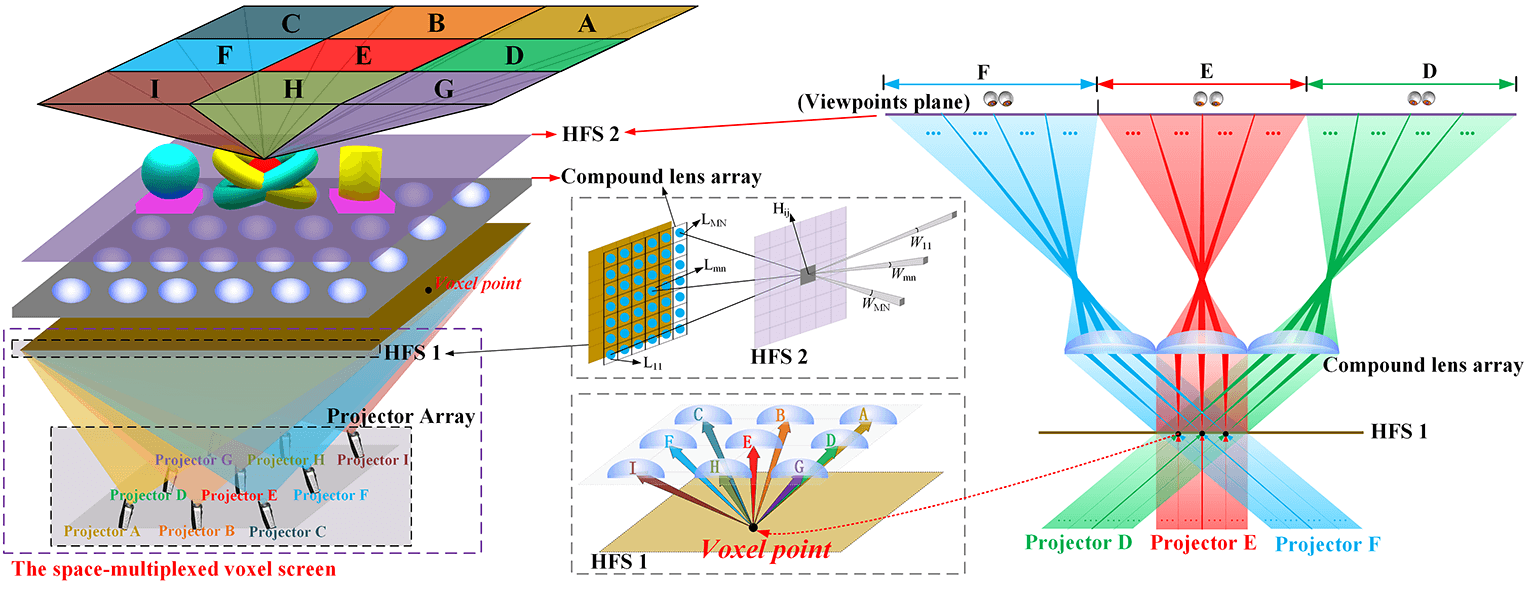 Open Access
Open Access
ARTICLE
The Flipping-Free Full-Parallax Tabletop Integral Imaging with Enhanced Viewing Angle Based on Space-Multiplexed Voxel Screen and Compound Lens Array
1
National Engineering Research Center of Port Hydraulic Construction Technology, Tianjin Research Institute for Water
Transport Engineering, M.O.T., Tianjin, 300456, China
2
State Key Laboratory of Information Photonics & Optical Communications, BUPT, Beijing, 100876, China
3
Research Department of Wireless Network, Huawei Technologies, Shanghai, 201206, China
* Corresponding Author: Peiren Wang. Email:
(This article belongs to the Special Issue: Recent Advances in Virtual Reality)
Computer Modeling in Engineering & Sciences 2023, 136(3), 3197-3211. https://doi.org/10.32604/cmes.2023.024305
Received 28 May 2022; Accepted 26 October 2022; Issue published 09 March 2023
Abstract
Tabletop integral imaging display with a more realistic and immersive experience has always been a hot spot in three-dimensional imaging technology, widely used in biomedical imaging and visualization to enhance medical diagnosis. However, the traditional structural characteristics of integral imaging display inevitably introduce the flipping effect outside the effective viewing angle. Here, a full-parallax tabletop integral imaging display without the flipping effect based on space-multiplexed voxel screen and compound lens array is demonstrated, and two holographic functional screens with different parameters are optically designed and fabricated. To eliminate the flipping effect in the reconstruction process, the space-multiplexed voxel screen consisting of a projector array and the holographic functional screen is presented to constrain light beams passing through the corresponding lens. To greatly promote imaging quality within the viewing area, the aspherical structure of the compound lens is optimized to balance the aberrations. It cooperates with the holographic functional screen to modulate the light field spatial distribution. Compared with the simulation results, the distortion rate of the imaging display is reduced to less than 9% from more than 30%. In the experiment, the floating high-quality reconstructed three-dimensional image without the flipping effect can be observed with the correct 3D perception at 96° × 96° viewing angle, where 44,100 viewpoints are employed.Graphic Abstract

Keywords
Cite This Article
 Copyright © 2023 The Author(s). Published by Tech Science Press.
Copyright © 2023 The Author(s). Published by Tech Science Press.This work is licensed under a Creative Commons Attribution 4.0 International License , which permits unrestricted use, distribution, and reproduction in any medium, provided the original work is properly cited.


 Submit a Paper
Submit a Paper Propose a Special lssue
Propose a Special lssue View Full Text
View Full Text Download PDF
Download PDF Downloads
Downloads
 Citation Tools
Citation Tools